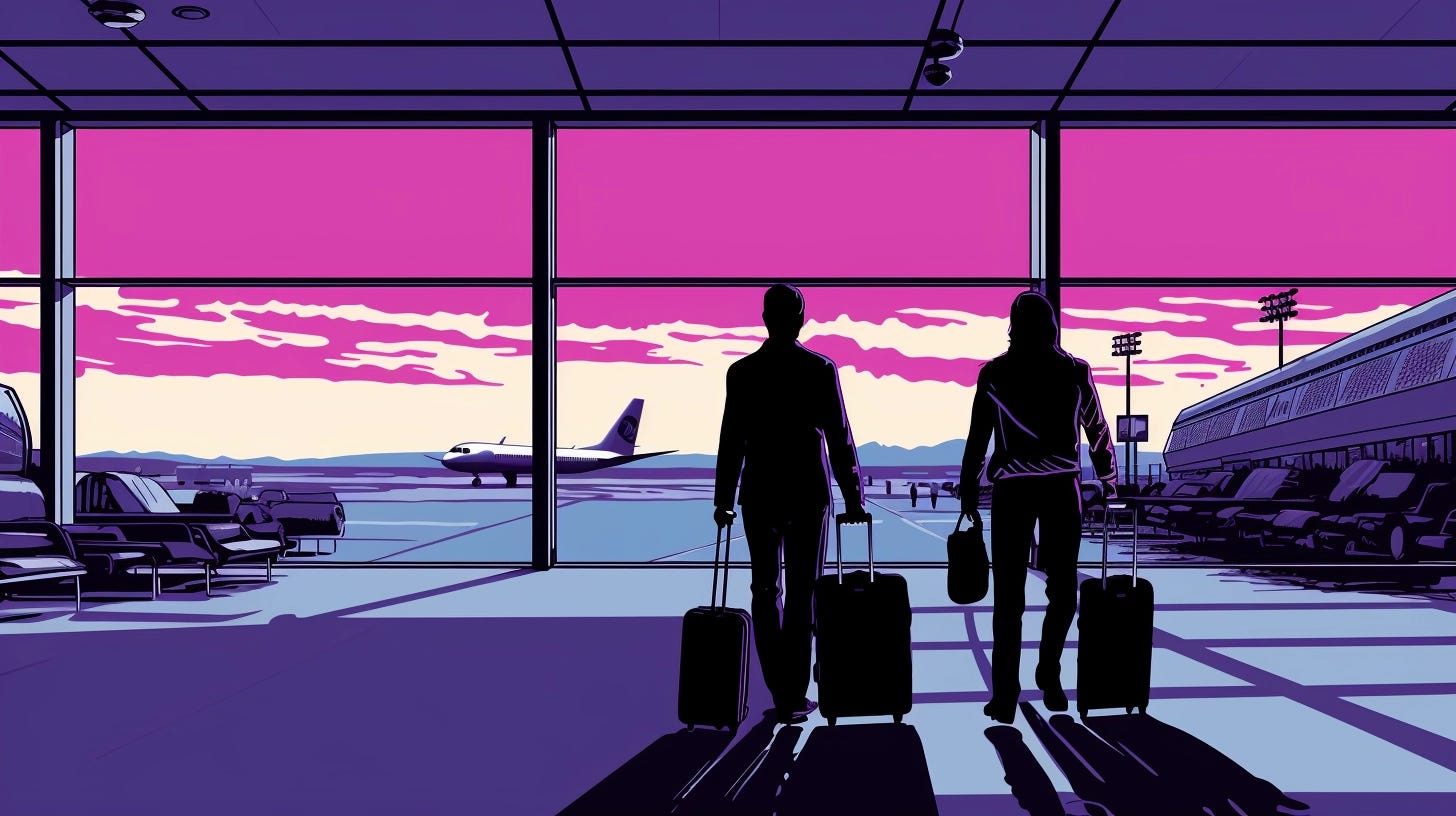The Las Vegas Uber Conspiracy
Okay, there's not actually a conspiracy. But there is this whole idea of using selective focus to shape perceptions
This is part of my “Art of Noticing” series, in which I learn, find, or discover the things around me that usually go unnoticed and turn them into an endless source of creative inspiration.
Today, I noticed how Uber is advertised in the Las Vegas airport as if it’s the only option, which it isn’t. It made me think about selective focus, and the behavior it drives.
NOTE: This post is the first in a series that covers my trip to Las Vegas for the final “20 Books to 50k” writers’ conference. Vegas turned out to be a great place to notice shit. So come up the road to the mafia capital of the southwest for the next few installments, will you?
I wanted to order a Lyft when I got to Vegas, but didn’t know how far away the pickup was. So I looked for signs. And saw huge black signs everywhere for Uber, as if Uber had sponsored Las Vegas itself.
No Lyft anywhere. Even though Lyft was very much alive and well. It just wasn’t advertised at all … and Uber abandon try was.
It got me thinking: In writing, what I choose to show the reader and what I choose to hide significantly influences the story I’m telling. It means we can do light literary brainwashing . Just like the Uber ads, by focusing exclusively on certain elements, we writers can steer our audience's attention in a direction that might not even be the truth.
Here's how this "noticing" can benefit my stories and art:
Manipulating Audience Perception
Just as those only-Uber ads influenced what I thought were my real-life choices, the elements I choose to highlight in my stories shape the audience's thinking big time. Doing this kind of thing on purpose can steer perception from “what’s true” to “what I want them to believe.” Obvious, I know. But have you ever thought to do it so pointedly as those damn Uber ads?
By controlling what is seen and what remains unseen, we’ll engage our audience's curiosity and imagination, allowing them to fill in the gaps with their interpretations. It puts the blame for misperceptions (and false leads) on them … and it also makes the reading experience more immersive and personal, because they’re unintentionally part of it.
Making a Focused Narrative
By deliberately choosing what to show and not show, we can focus our narratives like lasers, keeping the plot marching forward rather than letting people get lost in the details. This technique is really effective in genres like mystery or thriller, where controlling information is key to building suspense and intrigue.
Selective focus can also help character development. By showing only some parts of a character while hiding others, you can create depth and complexity. All real people are complex, BTW.
Highlighting and Shadowing Themes
Selective visibility isn't just about what's present. It's also about what's absent. By strategically not-mentioning certain things, we can create a sense of mystery or highlight themes.
Again, it’s about controlling focus. Focus on the core message of the story, emphasizing elements by their presence or their notable absence. It's a subtle way of guiding the reader's attention to what truly matters in the narrative.
We get to control the camera, and we do it by manipulating attention. We do that by showing and hiding certain elements. Remember, your reader can’t just “look anywhere” in your story. They only see what you show them. By mastering the art of selective visibility, we can tell stories that hit deeper with the reader.
Want to learn on the go?
Reading these posts is only one way to get these lessons. Every post here has a companion episode of my 10-minute, multi-times-weekly podcast, The Art of Noticing.
WANT MORE?
Members get extra posts like this one, bonus podcast episodes, and more every week … all for the price of a fancy coffee. Learn about membership here.





This is an aspect I am still "missing" in my writing. I still need to explore and grow and I'm glad you reminded me. Great post.